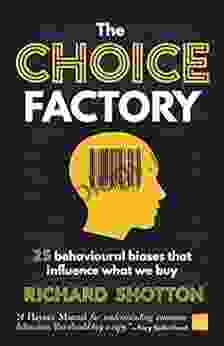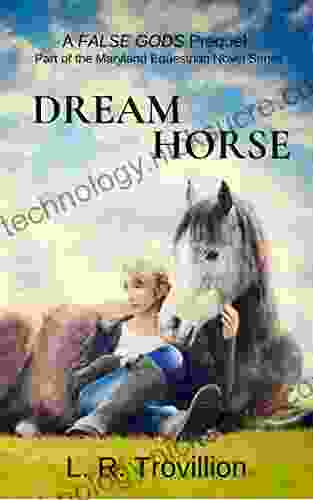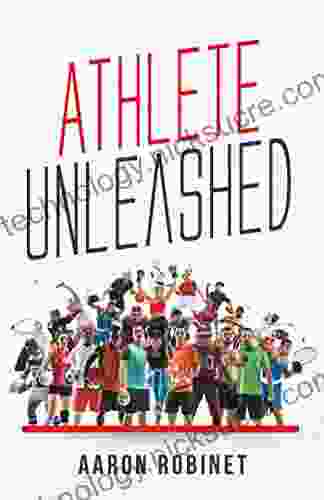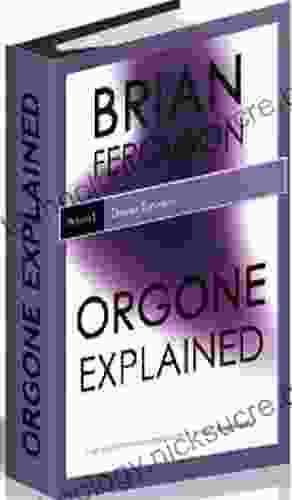25 Behavioural Biases That Influence What We Buy

We all want to make the best decisions possible, but our brains are often tricked by behavioural biases. These biases can lead us to make irrational choices, spend more money than we intended, and buy things we don't need. In this article, we'll explore 25 of the most common behavioural biases that influence our purchasing decisions.
4.7 out of 5
| Language | : | English |
| File size | : | 875 KB |
| Text-to-Speech | : | Enabled |
| Screen Reader | : | Supported |
| Enhanced typesetting | : | Enabled |
| X-Ray | : | Enabled |
| Word Wise | : | Enabled |
| Print length | : | 221 pages |
1. The Availability Heuristic
The availability heuristic is a cognitive bias that refers to our tendency to judge the likelihood of an event based on how easily we can remember examples of that event. For example, if we can easily recall several recent instances of a plane crash, we may overestimate the likelihood of a plane crash occurring in the future.
This bias can influence our purchasing decisions in a number of ways. For example, if we can easily recall several recent instances of a product breaking down, we may be more hesitant to purchase that product, even if it is a statistically sound decision.
2. The Anchoring Effect
The anchoring effect is a cognitive bias that refers to our tendency to use the first piece of information we receive about a product or service as a reference point for making future decisions. For example, if we see a product on sale for $100, we may be more likely to purchase it, even if we later find out that the same product is available for $80 at another store.
This bias can be used by marketers to influence our purchasing decisions. For example, a car salesperson may start by offering you a high price for a car, and then gradually lower the price until you agree to a deal. This can make you feel like you're getting a good deal, even if you're paying more than you intended.
3. The Decoy Effect
The decoy effect is a cognitive bias that refers to our tendency to choose an option that is seen as a compromise between two other options. For example, if we are given the choice between a small bowl of soup for $5, a large bowl of soup for $7, and a medium bowl of soup for $6, we may be more likely to choose the medium bowl of soup, even if we would have preferred the large bowl of soup if it was the only other option.
This bias can be used by marketers to influence our purchasing decisions. For example, a restaurant may offer a small burger for $5, a large burger for $7, and a medium burger for $6. This can make the medium burger seem like a good value, even though it is actually more expensive than the small burger.
4. The Endowment Effect
The endowment effect is a cognitive bias that refers to our tendency to place a higher value on things that we already own. For example, if we own a car, we may be more reluctant to sell it, even if we could get a better price for it than we paid for it.
This bias can influence our purchasing decisions in a number of ways. For example, we may be more likely to buy a product if we think it will become a part of our identity. We may also be more likely to hold onto a product that we already own, even if we no longer use it.
5. The Framing Effect
The framing effect is a cognitive bias that refers to our tendency to make different decisions depending on how information is presented to us. For example, if we are told that a new drug has a 90% success rate, we may be more likely to take it than if we are told that the drug has a 10% failure rate.
This bias can be used by marketers to influence our purchasing decisions. For example, a car salesperson may frame a car's fuel economy as "up to 30 mpg" instead of "as low as 20 mpg." This can make the car seem more fuel-efficient than it actually is.
6. The Illusion of Control
The illusion of control is a cognitive bias that refers to our tendency to believe that we have more control over events than we actually do. For example, we may believe that we can win a lottery if we choose the right numbers, even though the odds of winning are extremely small.
This bias can influence our purchasing decisions in a number of ways. For example, we may be more likely to buy a product if we believe that it will help us achieve a certain goal. We may also be more likely to take risks if we believe that we have control over the outcome.
7. The Sunk Cost Fallacy
The sunk cost fallacy is a cognitive bias that refers to our tendency to continue investing in a project, even when it is clear that the project is not going to be successful. For example, we may continue to put money into a stock that is losing value, even though it is clear that the stock is not going to recover.
This bias can influence our purchasing decisions in a number of ways. For example, we may be more likely to buy a product if we have already invested money in it. We may also be more likely to continue using a product, even if we are not satisfied with it, because we have already invested time and money in it.
8. The Status Quo Bias
The status quo bias is a cognitive bias that refers to our tendency to prefer the current state of affairs to any other option. For example, we may be more likely to stay in our current job, even if we are not happy with it, because it is the easiest option.
This bias can influence our purchasing decisions in a number of ways. For example, we may be more likely to buy a product if it is the same as a product that we already own. We may also be more likely to resist change, even if the change would be beneficial to us.
9. The Bandwagon Effect
The bandwagon effect is a cognitive bias that refers to our tendency to adopt a belief or behaviour because it is popular. For example, we may be more likely to buy a product if we see that other people are buying it.
This bias can be used by marketers to influence our purchasing decisions. For example, a company may use celebrity endorsements to make their products seem more popular. They may also use social media to create a sense of urgency, making us feel like we need to buy a product before it sells out.
10. The Halo Effect
The halo effect is a cognitive bias that refers to our tendency to generalize from one trait or characteristic to another. For example, if we believe that a person is attractive, we may also assume that they are intelligent and kind.
This bias can influence our purchasing decisions in a number of ways. For example, we may be more likely to buy a product if we believe that it is made by a reputable company. We may also be more likely to buy a product if it is endorsed by a celebrity that we admire.
11. The Confirmation Bias
The confirmation bias is a cognitive bias that refers to our tendency to seek out information that confirms our existing beliefs. For example, if we believe that a particular stock is going to go up in value, we may only seek out information that supports that belief.
This bias can influence our purchasing decisions in a number of ways. For example, we may be more likely to buy a product if we have already read positive reviews about it. We may also be more likely to ignore negative reviews, even if they are valid.
12. The Hindsight Bias
The hindsight bias is a cognitive bias that refers to our tendency to believe that we could have predicted an event after it has already happened. For example, if a stock market crashes, we may believe that we could have predicted the crash, even though we had no way of knowing that it was going to happen.
This bias can influence our purchasing decisions in a number of ways. For example, we may be more likely to buy a product if we believe that we could have predicted its success. We may also be more likely to regret buying a product if we believe that we should have known that it was going to fail.
4.7 out of 5
| Language | : | English |
| File size | : | 875 KB |
| Text-to-Speech | : | Enabled |
| Screen Reader | : | Supported |
| Enhanced typesetting | : | Enabled |
| X-Ray | : | Enabled |
| Word Wise | : | Enabled |
| Print length | : | 221 pages |
Do you want to contribute by writing guest posts on this blog?
Please contact us and send us a resume of previous articles that you have written.
 Fiction
Fiction Non Fiction
Non Fiction Romance
Romance Mystery
Mystery Thriller
Thriller SciFi
SciFi Fantasy
Fantasy Horror
Horror Biography
Biography Selfhelp
Selfhelp Business
Business History
History Classics
Classics Poetry
Poetry Childrens
Childrens Young Adult
Young Adult Educational
Educational Cooking
Cooking Travel
Travel Lifestyle
Lifestyle Spirituality
Spirituality Health
Health Fitness
Fitness Technology
Technology Science
Science Arts
Arts Crafts
Crafts DIY
DIY Gardening
Gardening Petcare
Petcare Martin Baldridge
Martin Baldridge Jennifer Kramer
Jennifer Kramer Q S Khan
Q S Khan Jacob Sannox
Jacob Sannox Lisa Manterfield
Lisa Manterfield Aleksandr Anufriyev
Aleksandr Anufriyev Howard Schor
Howard Schor Daniel Defoe
Daniel Defoe Alexander L Co
Alexander L Co Brigid Kemmerer
Brigid Kemmerer Sheryl Buckland
Sheryl Buckland Bill Haggerty
Bill Haggerty Alex Zimmerman
Alex Zimmerman Robert W Winters
Robert W Winters Shannon Jett
Shannon Jett Caren Cooper
Caren Cooper Molly Knox Ostertag
Molly Knox Ostertag David Borgenicht
David Borgenicht Qaiser Feroze
Qaiser Feroze Rajesh K Naz
Rajesh K Naz Pedro Domingos
Pedro Domingos Winona Guo
Winona Guo Daniel Pautrat
Daniel Pautrat Ernest T Stringer
Ernest T Stringer Tim Cahill
Tim Cahill Gail M Nelson
Gail M Nelson Katie Edwards
Katie Edwards Catherine Dawson
Catherine Dawson Albert Hofmann
Albert Hofmann G Blake Meike
G Blake Meike Devin Devasquez
Devin Devasquez Stephon Alexander
Stephon Alexander Gordon Feinberg
Gordon Feinberg Upgraded Brain
Upgraded Brain Patrick F Mcmanus
Patrick F Mcmanus Jenna Gottlieb
Jenna Gottlieb Loriann Oberlin
Loriann Oberlin Thomas Huhti
Thomas Huhti Arshay Cooper
Arshay Cooper Dipika Mukherjee
Dipika Mukherjee Laura Pavlov
Laura Pavlov Alex Hibbert
Alex Hibbert Namita Prasad
Namita Prasad Richard Cole
Richard Cole Alex Johnson
Alex Johnson Aubrey Sherman
Aubrey Sherman Duncan Butchart
Duncan Butchart Aaron Reynolds
Aaron Reynolds Thomas Sowell
Thomas Sowell Phil Hanrahan
Phil Hanrahan Nancy Marie Brown
Nancy Marie Brown Matt Johanson
Matt Johanson Alex J Packer
Alex J Packer Alexa Nicole Cucchiara
Alexa Nicole Cucchiara Steve Bechtel
Steve Bechtel Alex Bezzerides
Alex Bezzerides Dan Purser Md
Dan Purser Md David N Myers
David N Myers Sam Sheridan
Sam Sheridan Alexander Meyer
Alexander Meyer Janie B Butts
Janie B Butts Dan Gookin
Dan Gookin Alex Light
Alex Light Stephanie Ermenegild
Stephanie Ermenegild Jon Krakauer
Jon Krakauer Steve Warner
Steve Warner Martha Sears
Martha Sears David N Schwartz
David N Schwartz Alexander Clarke
Alexander Clarke Alex Mars
Alex Mars Walter Gretzky
Walter Gretzky Tiffany Dionne
Tiffany Dionne Carla Naumburg
Carla Naumburg Ashton Cartwright
Ashton Cartwright Sarah Ockwell Smith
Sarah Ockwell Smith Julia Wertz
Julia Wertz Greg Michaelson
Greg Michaelson Brett Cohen
Brett Cohen Matthew Johnson
Matthew Johnson Audra Fordin
Audra Fordin Thomas Cahill
Thomas Cahill Pekka Louhiala
Pekka Louhiala Alex Boese
Alex Boese Ash Perrin
Ash Perrin Phil Gaimon
Phil Gaimon Jase Robertson
Jase Robertson Jacqueline Tourville
Jacqueline Tourville Richard Ronald
Richard Ronald David L Demets
David L Demets John Thorne
John Thorne Robert L Wolke
Robert L Wolke Celeste Headlee
Celeste Headlee Lake E High
Lake E High Sara Shepard
Sara Shepard Hannah Arendt
Hannah Arendt Brad Borkan
Brad Borkan Richard D Easton
Richard D Easton Scott Fratcher
Scott Fratcher Alex Bellos
Alex Bellos Danielle Tumminio Hansen
Danielle Tumminio Hansen Duncan Wells
Duncan Wells Scott Turansky
Scott Turansky Alexander Bennett
Alexander Bennett Elissa Wall
Elissa Wall Marian Dewane
Marian Dewane Larry Pardey
Larry Pardey Chanice Lee
Chanice Lee Stephan Martin
Stephan Martin Mark Warren
Mark Warren Alberta Hawse
Alberta Hawse Brent Zwerneman
Brent Zwerneman F T Lukens
F T Lukens Karen Casey
Karen Casey Richard Shotton
Richard Shotton Lisa Silverman
Lisa Silverman Michael Terry
Michael Terry Linda Egenes
Linda Egenes Alexander Ferrauti
Alexander Ferrauti Diana L Paxson
Diana L Paxson Eric Zandona
Eric Zandona Jeremy Kubica
Jeremy Kubica Sareen S Gropper
Sareen S Gropper Olivier Doleuze
Olivier Doleuze Alfie Kohn
Alfie Kohn Glenn Rivers
Glenn Rivers Conn Iggulden
Conn Iggulden Bertus Engelbrecht
Bertus Engelbrecht Andrew Zerling
Andrew Zerling David Leadbetter
David Leadbetter Keith H Basso
Keith H Basso Lonely Planet
Lonely Planet Alistair Moffat
Alistair Moffat Alex Hunter
Alex Hunter Stephen R Lawhead
Stephen R Lawhead Margaret Willson
Margaret Willson Janine Marsh
Janine Marsh Michael Teitelbaum
Michael Teitelbaum Evan F Moore
Evan F Moore Robert Spindler
Robert Spindler Eli Burakian
Eli Burakian Elizabeth White
Elizabeth White Todd Denault
Todd Denault Thomas Jaden
Thomas Jaden Kevin Mcaleer
Kevin Mcaleer Joe Nobody
Joe Nobody Graham Hancock
Graham Hancock Catherine Crier
Catherine Crier Saunders Mac Lane
Saunders Mac Lane Kirsten Koza
Kirsten Koza Alex Pentland
Alex Pentland Anna Post
Anna Post Phyllis Good
Phyllis Good Alex Wade
Alex Wade Suzanna Mcgee
Suzanna Mcgee Jennifer Cohen Harper
Jennifer Cohen Harper Alex Wolf
Alex Wolf Travis Eliot
Travis Eliot John Stage
John Stage Janja Lalich
Janja Lalich Eric Enge
Eric Enge Titania Hardie
Titania Hardie Sabbithry Persad Mba
Sabbithry Persad Mba George E Vaillant
George E Vaillant Lara S Ormiston
Lara S Ormiston Peter Collier
Peter Collier Gary Coleman
Gary Coleman David Thomas
David Thomas Andrew Stellman
Andrew Stellman Charlene L Edge
Charlene L Edge Christina Riggs
Christina Riggs Alexander Boxer
Alexander Boxer Yannis Detorakis
Yannis Detorakis Kinsey Phifer
Kinsey Phifer Arieh Ben Naim
Arieh Ben Naim Jim Hynes
Jim Hynes Terry Marsh
Terry Marsh Ron Mckeefery
Ron Mckeefery Cary Nemeroff
Cary Nemeroff Jenny Mackay
Jenny Mackay Russ Unger
Russ Unger Jennet Conant
Jennet Conant Alexander Mackenzie
Alexander Mackenzie Jim Davidson
Jim Davidson David Shinar
David Shinar Michael Steven
Michael Steven Sophie David
Sophie David Fataniss Store
Fataniss Store Pamela K Lamb
Pamela K Lamb Alex Riley
Alex Riley J Richard Hackman
J Richard Hackman Scott L Smith
Scott L Smith Daniel Shapiro
Daniel Shapiro Suzanne Collins
Suzanne Collins Victor Davis Hanson
Victor Davis Hanson David J Chalmers
David J Chalmers Michael Thompson
Michael Thompson Morgan Lyle
Morgan Lyle Michael Sandler
Michael Sandler Mauricio Fau
Mauricio Fau Amanda Epperson
Amanda Epperson Theodore X O Connell
Theodore X O Connell C C Hunter
C C Hunter Amy Newmark
Amy Newmark C J Brown
C J Brown Alessandro Valerani
Alessandro Valerani David Farrier
David Farrier Don Pitcher
Don Pitcher Aman Gupta
Aman Gupta Tim Moore
Tim Moore S Kelley Harrell
S Kelley Harrell Albert Rutherford
Albert Rutherford Angelo Tropea
Angelo Tropea Gary Nicol
Gary Nicol Mark Reed
Mark Reed Alexandra Bracken
Alexandra Bracken Paul Sating
Paul Sating Aleister Crowley
Aleister Crowley River
River Alberto Villoldo
Alberto Villoldo Tetsu Kariya
Tetsu Kariya Phil Pierce
Phil Pierce Mary Lynne Fernandez
Mary Lynne Fernandez Barbara Ehrenreich
Barbara Ehrenreich Laura Eckert
Laura Eckert Pittacus Lore
Pittacus Lore Peter Ross
Peter Ross Albert S Tarendash
Albert S Tarendash Kevin Gallagher
Kevin Gallagher Anatoli Boukreev
Anatoli Boukreev Olivia Wildenstein
Olivia Wildenstein Jason R Rich
Jason R Rich Kortney Keisel
Kortney Keisel Holly Black
Holly Black Fridtjof Nansen
Fridtjof Nansen Marilynn Hughes
Marilynn Hughes Zach Davis
Zach Davis Philip Wylie
Philip Wylie Phil Keith
Phil Keith Mia King
Mia King Gabriyell Sarom
Gabriyell Sarom Bruce Johnson
Bruce Johnson Alda Sigmundsdottir
Alda Sigmundsdottir Robbie Couch
Robbie Couch Jon B Gould
Jon B Gould Oluwaseun Ajayi
Oluwaseun Ajayi L R Trovillion
L R Trovillion Hadley Wickham
Hadley Wickham Anne Bogel
Anne Bogel J C Herz
J C Herz Ben Ainslie
Ben Ainslie Deborah L Davis
Deborah L Davis Douglas D Scott
Douglas D Scott Alfred P Rovai
Alfred P Rovai Eric R Kandel
Eric R Kandel Elena Zotova
Elena Zotova Jeff Galloway
Jeff Galloway Patrick Taylor
Patrick Taylor Jeana Jorgensen
Jeana Jorgensen Daniel L Everett
Daniel L Everett Soo Kim Abboud
Soo Kim Abboud Gordon Rugg
Gordon Rugg Beverleigh H Piepers
Beverleigh H Piepers Sally Huss
Sally Huss Darl Kuhn
Darl Kuhn Cosmic Kids Publications
Cosmic Kids Publications Michael Digiacomo
Michael Digiacomo Kathryn Purdie
Kathryn Purdie George Ehrenhaft
George Ehrenhaft Scott Butler
Scott Butler Nate Silver
Nate Silver Jerry C Zee
Jerry C Zee Ken Schultz
Ken Schultz Don Bendell
Don Bendell Nikki Nichols
Nikki Nichols Albert Ellis
Albert Ellis James Patterson
James Patterson Judy Dutton
Judy Dutton Brian Beffort
Brian Beffort Robertson Tait
Robertson Tait Rebecca Wilson
Rebecca Wilson Erin Bowe
Erin Bowe Vimla L Patel
Vimla L Patel Douglas Doman
Douglas Doman Chuck Norris
Chuck Norris Katrina M Adams
Katrina M Adams Kingsley Amis
Kingsley Amis Michele Gelfand
Michele Gelfand Robert Dos Remedios
Robert Dos Remedios Anne Dachel
Anne Dachel Mary Ellen Hannibal
Mary Ellen Hannibal Suzie Sheehy
Suzie Sheehy Celia Hodent
Celia Hodent W C Mcrae
W C Mcrae John Boyette
John Boyette John Kretschmer
John Kretschmer Michael Clary
Michael Clary Philip Ball
Philip Ball Ben Malisow
Ben Malisow Alexander Jones
Alexander Jones Kathleen Mcmillan
Kathleen Mcmillan Genese Marie Sodikoff
Genese Marie Sodikoff Mark Sisson
Mark Sisson Donald D Hoffman
Donald D Hoffman Will Hart
Will Hart Stephen K Hayes
Stephen K Hayes Taylor Harris
Taylor Harris Kristin Gambaccini
Kristin Gambaccini Vasti Torres
Vasti Torres Phil Jarratt
Phil Jarratt Cecil B Hartley
Cecil B Hartley Scott Kelly
Scott Kelly Raj Kumar
Raj Kumar Jennifer Van Allen
Jennifer Van Allen Lyn Kelley
Lyn Kelley Bob Palmer
Bob Palmer Lynn Alley
Lynn Alley Peter Galison
Peter Galison Roy Plotnick
Roy Plotnick Sarah Stewart Johnson
Sarah Stewart Johnson Kristen Jane Anderson
Kristen Jane Anderson Kevin Bales
Kevin Bales Alan Lightman
Alan Lightman Alicia Ranoldo
Alicia Ranoldo Alex Reinhart
Alex Reinhart Ruth Minsky Sender
Ruth Minsky Sender Alex Guarnaschelli
Alex Guarnaschelli Wesley Bernardini
Wesley Bernardini Vanessa Van Edwards
Vanessa Van Edwards Laura Morton Rd
Laura Morton Rd Kent David Kelly
Kent David Kelly Brent Herrick
Brent Herrick Leonhard Euler
Leonhard Euler Sarah Franklin
Sarah Franklin Paul Volponi
Paul Volponi Idan Ravin
Idan Ravin John Quick
John Quick Pascal Boyer
Pascal Boyer Michele Filgate
Michele Filgate Albert W A Schmid
Albert W A Schmid William R Short
William R Short Ernest Hemingway
Ernest Hemingway Harold Klemp
Harold Klemp R K Gupta
R K Gupta Alex Polyakov
Alex Polyakov Alex Morgan
Alex Morgan Danielle Paige
Danielle Paige Jimmy Connors
Jimmy Connors Austin Murphy
Austin Murphy Stephen L Sass
Stephen L Sass James Johonnot
James Johonnot Teresa Denton
Teresa Denton Richard M Foxx
Richard M Foxx Dan Jacob
Dan Jacob Georgiann Davis
Georgiann Davis Stanley Cohen
Stanley Cohen Hal Higdon
Hal Higdon Patrick Alan Danaher
Patrick Alan Danaher Deirdre Martin
Deirdre Martin Gf Denehy
Gf Denehy Christie Cognevich
Christie Cognevich K D Hume
K D Hume Megan Carle
Megan Carle Joan Wulff
Joan Wulff John Burroughs
John Burroughs Hiro Ainana
Hiro Ainana Luis Angel Echeverria
Luis Angel Echeverria Willard A Palmer
Willard A Palmer Ralph Vacchiano
Ralph Vacchiano Ari Mennander
Ari Mennander Jules Wake
Jules Wake Donnie Eichar
Donnie Eichar Saxon Andrew
Saxon Andrew Alessio Mangoni
Alessio Mangoni Kieran Mccarthy
Kieran Mccarthy Heather Dale
Heather Dale Otto Kroeger
Otto Kroeger Alex Gillis
Alex Gillis P J Agness
P J Agness Derrick Niederman
Derrick Niederman Paul Trammell
Paul Trammell Alex Banks
Alex Banks Sam Jalloh
Sam Jalloh Gigi Georges
Gigi Georges Ellen Snortland
Ellen Snortland Peter Matthiessen
Peter Matthiessen Eric Mason
Eric Mason Rough Guides
Rough Guides Fiaz Rafiq
Fiaz Rafiq Chip Heath
Chip Heath Diana Hopkins
Diana Hopkins Scott Whitlock
Scott Whitlock Rebecca Schrag Hershberg
Rebecca Schrag Hershberg Marvin Harris
Marvin Harris Stormie Omartian
Stormie Omartian Kalynn Bayron
Kalynn Bayron Peter Maguire
Peter Maguire Chella Man
Chella Man Nancy Silverton
Nancy Silverton Wallace Wang
Wallace Wang Alexander Mccall Smith
Alexander Mccall Smith Alex J Gutman
Alex J Gutman Tony Roig
Tony Roig David G Kleinbaum
David G Kleinbaum Game Spark
Game Spark Nate Orlowek
Nate Orlowek Albert Marrin
Albert Marrin Howard Carter
Howard Carter Alexa Whitewolf
Alexa Whitewolf Simon Monk
Simon Monk Stan Utley
Stan Utley Albert J Raboteau
Albert J Raboteau Jennifer Estep
Jennifer Estep Chris Englert
Chris Englert Geza Vermes
Geza Vermes Julie Berry
Julie Berry Sabine Hossenfelder
Sabine Hossenfelder Milan Yerkovich
Milan Yerkovich Peter J Feibelman
Peter J Feibelman Stephen Wilbers
Stephen Wilbers James Suzman
James Suzman Margaret Rooke
Margaret Rooke Alex Itsios
Alex Itsios Katherine Leigh
Katherine Leigh Victoria Wilson
Victoria Wilson Aaron Robinet
Aaron Robinet Henrik Beyer
Henrik Beyer Sally Moomaw
Sally Moomaw Tracy Brown Collins
Tracy Brown Collins L Michele Issel
L Michele Issel Robert Benson
Robert Benson Amber Lia
Amber Lia Kyle Rohrig
Kyle Rohrig Itzhak Bentov
Itzhak Bentov Mine Dogucu
Mine Dogucu Sarah Lynne Bowman
Sarah Lynne Bowman Denny Matthews
Denny Matthews Hannah V Holmes
Hannah V Holmes Jerry C Whitaker
Jerry C Whitaker Victoria Schwab
Victoria Schwab Sky Marsen
Sky Marsen Rachael Ray
Rachael Ray George Marshall
George Marshall Alex Harris
Alex Harris Dr Yvonne S Thornton
Dr Yvonne S Thornton Mark Creasy
Mark Creasy Fretta Reitzes
Fretta Reitzes Julian B Barbour
Julian B Barbour Josh Bryant
Josh Bryant Earl Swift
Earl Swift Emma Hansen
Emma Hansen Dennis R Helsel
Dennis R Helsel Garth Nix
Garth Nix Yang Erche Namu
Yang Erche Namu Steve Flink
Steve Flink Moh Kolli Carnet
Moh Kolli Carnet Dr Rebecca Harwin
Dr Rebecca Harwin Derek Lundy
Derek Lundy Robert Penn
Robert Penn Mark Golds
Mark Golds Steve Helling
Steve Helling Chukwuma Eleodimuo
Chukwuma Eleodimuo Meredith Atwood
Meredith Atwood Linda White
Linda White Alejandro Portes
Alejandro Portes Jennifer Boyle
Jennifer Boyle Roseanne A Brown
Roseanne A Brown Elon Vidal
Elon Vidal Gabriel Levy
Gabriel Levy Leigh Hatts
Leigh Hatts Darin Ingels
Darin Ingels Peter Brown
Peter Brown
Light bulbAdvertise smarter! Our strategic ad space ensures maximum exposure. Reserve your spot today!

 Ernest Powell30 Tours of the Mile High City: Best Urban Trails, Historic Architecture, and...
Ernest Powell30 Tours of the Mile High City: Best Urban Trails, Historic Architecture, and...
 Aleksandr PushkinThe Ultimate Guide to the Certified Dialysis Nurse Exam Flashcard Study...
Aleksandr PushkinThe Ultimate Guide to the Certified Dialysis Nurse Exam Flashcard Study... Rod WardFollow ·16.8k
Rod WardFollow ·16.8k Kirk HayesFollow ·17.9k
Kirk HayesFollow ·17.9k Ted SimmonsFollow ·10.9k
Ted SimmonsFollow ·10.9k Haruki MurakamiFollow ·3.5k
Haruki MurakamiFollow ·3.5k Justin BellFollow ·6k
Justin BellFollow ·6k Ross NelsonFollow ·6.2k
Ross NelsonFollow ·6.2k Edward ReedFollow ·10.1k
Edward ReedFollow ·10.1k John GreenFollow ·2.2k
John GreenFollow ·2.2k
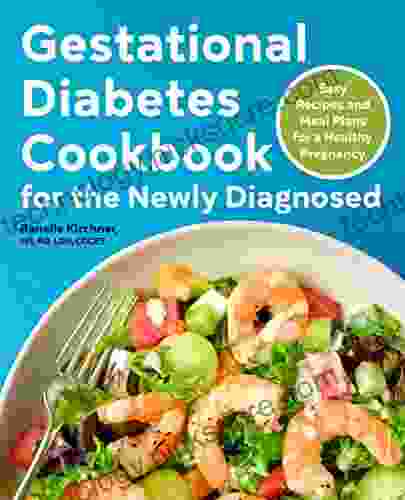
 Jeffrey Cox
Jeffrey CoxEasy Recipes And Meal Plans For Healthy Pregnancy
Congratulations on...
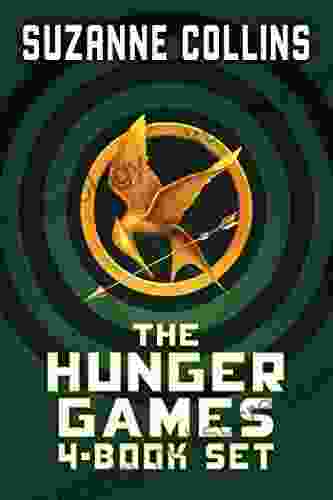
 Andy Cole
Andy ColeDive into the Fiery Ordeal and Mockingjay's Rebellion: An...
: A Captivating Dystopian Saga The...

 Ernest Powell
Ernest PowellLore Alexandra Bracken: Unveiling the Mastermind Behind...
: In the vast expanse of contemporary...
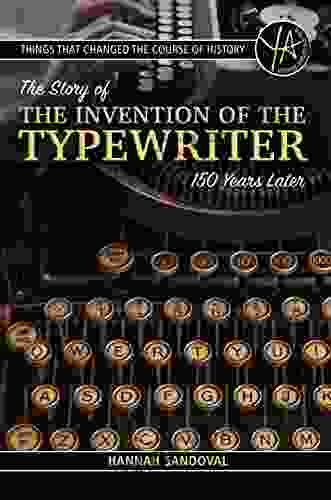
 T.S. Eliot
T.S. EliotThe Story of the Invention of the Typewriter: 150 Years...
The typewriter, a...
4.7 out of 5
| Language | : | English |
| File size | : | 875 KB |
| Text-to-Speech | : | Enabled |
| Screen Reader | : | Supported |
| Enhanced typesetting | : | Enabled |
| X-Ray | : | Enabled |
| Word Wise | : | Enabled |
| Print length | : | 221 pages |


